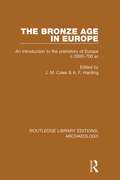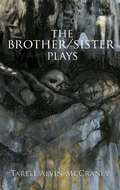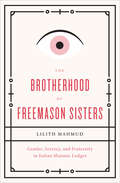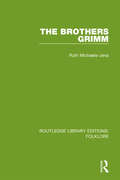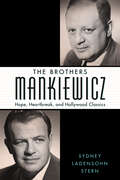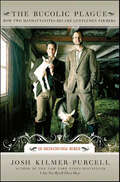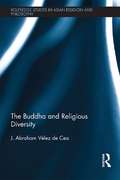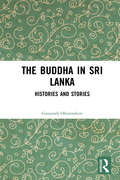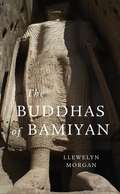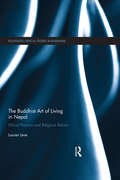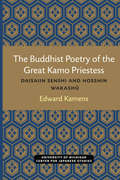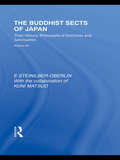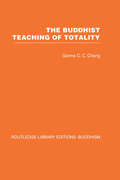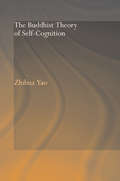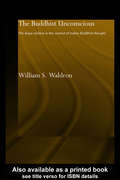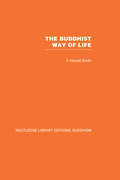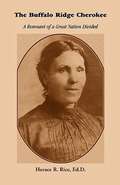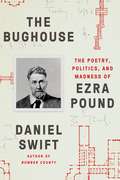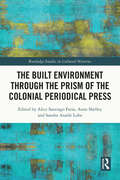- Table View
- List View
The Bronze Age in Europe: An Introduction to the Prehistory of Europe c.2000-700 B.C. (Routledge Library Editions: Archaeology)
by J. M. COLES & A. F. HARDINGThis book provides an account of the development of European culture and society during the Bronze Age, the time span between c. 2000 and 700 BC. It was a period of remarkable innovation, seen for instance in the development and growth of metallurgy as a major industry, the spread of trading contacts, the origins of urbanism and the beginnings of social stratification. The study is divided chronologically into two, the earlier and later Bronze Age, giving a clear picture of the nature of the radical changes which occurred in the period as a whole. The geographical area covered, from the Atlantic shores across Europe into the Soviet Union and from northern Scandinavia to the Mediterranean, is too vast to be taken as one unit, and has been broken down into five regions; each is discussed in terms of settlement form, burial practices, ritual and religious sites, material culture, economic and social background, and trading patterns. The book describes and develops common themes that link together the different areas and cultural groups, rather than taking the typographical approach often adopted by Bronze Age specialists, and uses the results of radiocarbon dating to establish an objective chronology for the period. The text is generously illustrated and fully documented with radiocarbon dating tables and extensive bibliography. Our understanding of Bronze Age Europe is still increasing, but no other book of this scope had been written before this, in 1979. It is a major study of its time of interest to anyone looking beyond popular accounts of the day.
The Brother/Sister Plays
by Tarell Alvin Mccraney"McCraney's richly drawn characters and colloquial poetry . . . manages to sound both epic and rooted in a specific place. Listen closely, and you might hear that thrilling sound that is one of the main reasons we go to the theater, that beautiful music of a new voice."--The New York Times"Taut, expressive drama, The Brothers Size realizes the potential of theater to elevate the ordinary. . . . McCraney's writing can be arresting."--Time Out New YorkThis is the first collection by Tarell Alvin McCraney, a major new playwright of the American theater. Lyrical and mythic, provocative and contemporary, McCraney's dramas of kinship, love, and heartache are set in the bayou of Louisiana and loosely draw on West African myths. In the Red and Brown Water charts the story of Oya, a fast and beautiful track star who must make difficult choices on her journey to womanhood. The Brothers Size dramatizes the struggle between brothers who have taken different paths: Ogun, single-mindedly running his auto shop, and Oshoosi, recently returned from prison and fallen back with trouble. Marcus; or the Secret of Sweet explores a young man's relationship with his history and friends as he discovers his sexuality and true self against the backdrop of an impending storm.Tarell Alvin McCraney's other works include Wig Out! and The Breach. His plays have been produced at The Public Theater in New York, internationally at the Royal Court Theatre and Abbey Theatre, and throughout the United States.
The Brotherhood of Freemason Sisters: Gender, Secrecy, and Fraternity in Italian Masonic Lodges
by Lilith MahmudThis &“stupendous ethnography of female Freemasonry in Italy&” reveals the fascinating paradox of elitism and exclusion experienced by &“female brothers&” (Michael Herzfeld, author of Evicted from Eternity). From its cryptic images on the dollar bill to Dan Brown&’s The Lost Symbol, the Freemasons have long been one of the most romanticized secret societies in the world. But a simple fact escapes most depictions of this elite brotherhood: there are also female members. In this groundbreaking ethnography, Lilith Mahmud takes readers inside Masonic lodges of contemporary Italy, where she observes the ritualistic and fraternal bonds forged among Freemason women. Offering a tantalizing look behind lodge doors, The Brotherhood of Freemason Sisters unveils a complex culture of discretion in which Freemasons reveal some truths and hide others. Female initiates—one of Freemasonry&’s best-kept secrets—are often upper class and highly educated, yet avowedly antifeminist. Their self-cultivation through the Masonic path is an effort to embrace the deeply gendered ideals of fraternity. In this lively investigation, Mahmud unravels the contradictions at the heart of Freemasonry: an organization responsible for many of the egalitarian concepts of the Enlightenment and yet one that has always been, and in Italy still remains, extremely exclusive. The result is not only a thrilling look at a surprisingly influential world, but a reevaluation of the modern values we now take for granted
The Brothers Grimm (RLE Folklore)
by Ruth Michaelis-JenaThis is the first modern biography of the Brothers Grimm, first published in 1970. It is a study of them in their background of late eighteenth-century and nineteenth-century Germany, and shows the position they held in their society as founders of Germanic philology, as members of the 'Göttingen Seven', and inside the circle of the German Romantics. Jacob and Wilhelm Grimm were pioneers in the recording of authentic traditional stories. Gradual revisions gave these tales the form in which they have come down to us. Even if more recently the custom has been to leave stories as they were told, the astonishing currency of the Grimms' collection is due largely to the brothers' editorial work. The Grimms' lasting fame, as Michaelis-Jena points out, may well rest on the fact that by their insistence on 'genuine and true recording' they turned the amateur antiquarian into the professional folklorist. Ruth Michaelis-Jena has worked for many years on the Brothers Grimm, and has had access to little known material at various libraries and museums in Germany.
The Brothers Lionheart
by Astrid Lindgren Joan TateThere's no one Karl Lion loves more than his older brother, Jonathan, who is brave, strong, and handsome - everything Karl believes he is not. Karl never wants to be parted from him. But Karl is sick, and knows he's going to die. To comfort him, Jonathan tells him stories of Nangiyala, the wonderful place he'll be going to when he dies, and where he will wait until Jonathan is ready to join him there. Then the unthinkable happens . . . Jonathan is killed in an accident. Heartbroken, Karl longs for the day he'll be reunited with his brother. When the time comes, he finds Nangiyala just as wonderful as he'd imagined. However, Nangiyala is under threat. A cruel tyrant is determined to claim it as his own, and at his command is a terrible beast that is feared throughout the land. Karl must summon all of his courage to help his brother prepare for the battle that lies ahead . . . 'I adored Astrid Lindgren as a child' Francesca Simon, author of the 'Horrid Henry' books.
The Brothers Mankiewicz: Hope, Heartbreak, and Hollywood Classics (Hollywood Legends Series)
by Sydney Ladensohn SternWinner of the 2020 Peter C. Rollins Book AwardLonglisted for the 2020 Moving Image Book Award by the Kraszna-Krausz FoundationNamed a 2019 Richard Wall Memorial Award Finalist by the Theatre Library AssociationHerman J. (1897–1953) and Joseph L. Mankiewicz (1909–1993) wrote, produced, and directed over 150 pictures. With Orson Welles, Herman wrote the screenplay for Citizen Kane and shared the picture’s only Academy Award. Joe earned the second pair of his four Oscars for writing and directing All About Eve, which also won Best Picture. Despite triumphs as diverse as Monkey Business and Cleopatra, and Pride of the Yankees and Guys and Dolls, the witty, intellectual brothers spent their Hollywood years deeply discontented and yearning for what they did not have—a career in New York theater. Herman, formerly an Algonquin Round Table habitué, New York Times and New Yorker theater critic, and playwright-collaborator with George S. Kaufman, never reconciled himself to screenwriting. He gambled away his prodigious earnings, was fired from all the major studios, and drank himself to death at fifty-five. While Herman drifted downward, Joe rose to become a critical and financial success as a writer, producer, and director, though his constant philandering with prominent stars like Joan Crawford, Judy Garland, and Gene Tierney distressed his emotionally fragile wife who eventually committed suicide. He wrecked his own health using uppers and downers in order to direct Cleopatra by day and finish writing it at night, only to be very publicly fired by Darryl F. Zanuck, an experience from which Joe never fully recovered. For this award-winning dual portrait of the Mankiewicz brothers, Sydney Ladensohn Stern draws on interviews, letters, diaries, and other documents still in private hands to provide a uniquely intimate behind-the-scenes chronicle of the lives, loves, work, and relationship between these complex men.
The Bucolic Plague: How Two Manhattanites Became Gentlemen Farmers
by Josh Kilmer-Purcell“I adore the Beekman boys’ story. Their unlikely story of love, the land, and a herd of goats is hilariously honest. If these two can go from Manhattan to a goat farm in upstate New York, then I can’t help feeling there is hope for us all.” –Alice Waters “Kilmer-Purcell’s genius lies in his ability to blindside the reader with heart-wrenching truths in the midst of the most outlandish scenarios. He makes you laugh until you care.” — Armistead Maupin Michael Perry (Coop, Truck: A Love Story) meets David Sedaris (Me Talk Pretty One Day, Dress Your Family in Corduroy and Denim) in this follow-up to Josh Kilmer-Purcell’s beloved New York Times bestselling debut memoir, I Am Not Myself These Days—another riotous, moving, and entirely unique story of his attempt to tackle the next phase of life with his partner… on a goat farm in upstate New York.
The Buddha and Religious Diversity
by J. Abraham Velez de CeaProviding a rigorous analysis of Buddhist ways of understanding religious diversity, this book develops a new foundation for cross-cultural understanding of religious diversity in our time. Examining the complexity and uniqueness of Buddha’s approach to religious pluralism using four main categories – namely exclusivism, inclusivism, pluralistic-inclusivism and pluralism – the book proposes a cross-cultural and interreligious interpretation of each category, thus avoiding the accusation of intellectual colonialism. The key argument is that, unlike the Buddha, most Buddhist traditions today, including Theravāda Buddhism and even the Dalai Lama, consider liberation and the highest stages of spiritual development exclusive to Buddhism. The book suggests that the Buddha rejects many doctrines and practices found in other traditions, and that, for him, there are nonnegotiable ethical and doctrinal standards that correspond to the Dharma. This argument is controversial and likely to ignite a debate among Buddhists from different traditions, especially between conservative and progressive Buddhists. The book fruitfully contributes to the literature on inter-religious dialogue, and is of use to students and scholars of Asian Studies, World Religion and Eastern Philosophy.
The Buddha in Sri Lanka: Histories and Stories
by Gananath ObeyesekereThis book examines culture, religion and polity in the context of Buddhism. Gananath Obeyesekere, one of the foremost analytical voices from South Asia develops Freud’s notion of ‘dream work’, the ‘work of culture’ and ideas of no-self (anatta) to understand Buddhism in contemporary Sri Lanka. This work offers a restorative interpretation of Buddhist myths in contrast to the perspective involving deconstruction. The book deals with a range of themes connected with Buddhism, including oral traditions and stories, the religious pantheon, philosophy, emotions, reform movements, questions of identity and culture, and issues of modernity. This fascinating volume will greatly interest students, teachers and researchers of religion and philosophy, especially Buddhism, ethics, cultural studies, social and cultural anthropology, Sri Lanka and modern South Asian history.
The Buddha's Philosophy: Selections from the Pali Canon and an Introductory Essay (Routledge Library Editions: Buddhism)
by G F AllenThis study, originally published in 1959, traces the origin of Buddhism in Brahmanism, and fixes its relationship to Hinduism, describing and stressing the basic importance of Buddhist contemplation. The first half of the book introduces the very heart of Buddhism, while the second part presents the Teaching itself, as handed down in the canonical writings of the ancient East.
The Buddhas of Bamiyan
by Llewelyn MorganFor 1,400 years, two colossal figures of the Buddha overlooked the fertile Bamiyan Valley on the Silk Road in Afghanistan. Witness to a melting pot of passing monks, merchants, and armies, the Buddhas embodied the intersection of East and West, and their destruction by the Taliban in 2001 provoked international outrage. Llewelyn Morgan excavates the layers of meaning these vanished wonders hold for a fractured Afghanistan. Carved in the sixth and seventh centuries, the Buddhas represented a confluence of religious and artistic traditions from India, China, Central Asia, and Iran, and even an echo of Greek influence brought by Alexander the Great’s armies. By the time Genghis Khan destroyed the town of Bamiyan six centuries later, Islam had replaced Buddhism as the local religion, and the Buddhas were celebrated as wonders of the Islamic world. Not until the nineteenth century did these figures come to the attention of Westerners. That is also the historical moment when the ground was laid for many of Afghanistan’s current problems, including the rise of the Taliban and the oppression of the Hazara people of Bamiyan. In a strange twist, the Hazaras-descendants of the conquering Mongol hordes who stormed Bamiyan in the thirteenth century-had come to venerate the Buddhas that once dominated their valley as symbols of their very different religious identity. Incorporating the voices of the holy men, adventurers, and hostages throughout history who set eyes on the Bamiyan Buddhas, Morgan tells the history of this region of paradox and heartache.
The Buddhist Art of Living in Nepal: Ethical Practice and Religious Reform (Routledge Critical Studies in Buddhism)
by Lauren LeveTheravada Buddhism has experienced a powerful and far-reaching revival in modern Nepal, especially among the Newar Buddhist laity, many of whom are reorganizing their lives according to its precepts, practices and ideals. This book documents these far-reaching social and personal transformations and links them to political, economic and cultural shifts associated with late modernity, and especially neoliberal globalization. Nepal has changed radically over the last century, particularly since the introduction of liberal democracy and an open-market economy in 1990. The rise of lay vipassana meditation has also dramatically impacted the Buddhist landscape. Drawing on recently revived understandings of ethics as embodied practices of self-formation, the author argues that the Theravada turn is best understood as an ethical movement that offers practitioners ways of engaging, and models for living in, a rapidly changing world. The book takes readers into the Buddhist reform from the perspectives of its diverse practitioners, detailing devotees' ritual and meditative practices, their often conflicted relations to Vajrayana Buddhism and Newar civil society, their struggles over identity in a formerly Hindu nation-state, and the political, cultural, institutional and moral reorientations that becoming a "pure Buddhist"—as Theravada devotees understand themselves—entails. Based on more than 20 years of anthropological fieldwork, this book is an important contribution to scholarly debates over modern Buddhism, ethical practices, and the anthropology of religion. It is of interest to students and scholars of Asian Religion, Anthropology, Buddhism and Philosophy.
The Buddhist Poetry of the Great Kamo Priestess: Daisaiin Senshi and Hosshin Wakashu (Michigan Monograph Series in Japanese Studies #5)
by Edward KamensSenshi was born in 964 and died in 1035, in the Heian period of Japanese history (794–1185). Most of the poems discussed here are what may loosely be called Buddhist poems, since they deal with Buddhist scriptures, practices, and ideas. For this reason, most of them have been treated as examples of a category or subgenre of waka called Shakkyoka, “Buddhist poems.” Yet many Shakkyoka are more like other poems in the waka canon than they are unlike them. In the case of Senshi’s “Buddhist poems,” their language links them to the traditions of secular verse. Moreover, the poems use the essentially secular public literary language of waka to address and express serious and relatively private religious concerns and aspirations. In reading Senshi’s poems, it is as important to think about their relationship to the traditions and conventions of waka and to other waka texts as it is to think about their relationship to Buddhist thoughts, practices, and texts. The Buddhist Poetry of the Great Kamo Priestess creates a context for the reading of Senshi’s poems by presenting what is known and what has been thought about her and them. As such, it is a vital source for any reader of Senshi and other literature of the Heian period.
The Buddhist Sects of Japan: Their History, Philosophical Doctrines and Sanctuaries (Routledge Library Editions: Japan)
by E Steinilber-OberlinThe philosophy of Buddhism, originating in India, has undergone considerable changes in its adoption in the Far East. It has, in Japan, assumed a more practical aspect, and has come to play an important role in the everyday life of action. But in this process Japanese Buddhism has split itself into many sects with greatly differing doctrines, though all profess a method destined to elevate the soul and a method of action. The understanding of this spiritual movement is an important key to the understanding of the contemporary Japanese state of mind, and The Buddhist Sects of Japan gives the first complete account of it in the English language.
The Buddhist Tantras: Light on Indo-Tibetan Esotericism (Routledge Library Editions: Buddhism)
by Alex WaymanOriginally published in 1973. The volume is divided into four sections: The introduction places the position of the Buddhist Tantras within Mahayana Buddhism and recalls their early literary history, especially the Guhyasamahatantra; the section also covers Buddhist Genesis and the Tantric tradition. The foundations of the Buddhist Tantras are discussed and the Tantric presentation of divinity; the preparation of disciples and the meaning of initiation; symbolism of the mandala-palace Tantric ritual and the twilight language. This section explores the Tantric teachings of the inner Zodiac and the fivefold ritual symbolism of passion. The bibliographical research contains an analysis of the Tantric section of the Kanjur exegesis and a selected Western Bibliography of the Buddhist Tantras with comments.
The Buddhist Teaching of Totality: The Philosophy of Hwa Yen Buddhism (Routledge Library Editions: Buddhism)
by Garma C ChangOriginally published in 1971. Long regarded as a classic, this volume is one of the most systematic treatments of Hwa Yen to have appeared in the English language. With excellently translated selections of Hwa Yen readings, factual information and discussion, it is highly recommended to readers whose interests in Buddhism incline toward the metaphysical and phenomenological.
The Buddhist Theory of Self-Cognition (Routledge Critical Studies in Buddhism)
by Zhihua YaoThis highly original work explores the concept of self-awareness or self-consciousness in Buddhist thought. Its central thesis is that the Buddhist theory of self-cognition originated in a soteriological discussion of omniscience among the Mahasamghikas, and then evolved into a topic of epistemological inquiry among the Yogacarins. To illustrate this central theme, this book explores a large body of primary sources in Chinese, Pali, Sanskrit and Tibetan, most of which are presented to an English readership for the first time. It makes available important resources for the study of the Buddhist philosophy of mind.
The Buddhist Unconscious: The Alaya-vijñana in the context of Indian Buddhist Thought (Routledge Critical Studies in Buddhism)
by William S WaldronThis is the story of fifth century CE India, when the Yogacarin Buddhists tested the awareness of unawareness, and became aware of human unawareness to an extraordinary degree. They not only explicitly differentiated this dimension of mental processes from conscious cognitive processes, but also offered reasoned arguments on behalf of this dimension of mind. This is the concept of the 'Buddhist unconscious', which arose just as philosophical discourse in other circles was fiercely debating the limits of conscious awareness, and these ideas in turn had developed as a systematisation of teachings from the Buddha himself. For us in the twenty-first century, these teachings connect in fascinating ways to the Western conceptions of the 'cognitive unconscious' which have been elaborated in the work of Jung and Freud. This important study reveals how the Buddhist unconscious illuminates and draws out aspects of current western thinking on the unconscious mind. One of the most intriguing connections is the idea that there is in fact no substantial 'self' underlying all mental activity; 'the thoughts themselves are the thinker'. William S. Waldron considers the implications of this radical notion, which, despite only recently gaining plausibility, was in fact first posited 2,500 years ago.
The Buddhist Way of Life: Its Philosophy and History (Routledge Library Editions: Buddhism)
by F Harold SmithOriginally published in 1951. This study of Buddhism deals with the early tradition, followed by a brief consideration of its historicity and the form the religion takes in Sri Lanka, Burma and Thailand. The main line of development in India, China and Japan is then discussed. Focussing on essential Buddhism in both its chief schools, the Lesser and Greater Vehicle, the influence of philosophy on sect and of both on the practical affairs of history are examined.
The Buffalo Century: Vāñcheśvara Dīkṣita’s Mahiṣaśatakam: A Political Satire for All Centuries
by Kesavan VeluthatThe Buffalo Century is a keen exploration of satire and its role in society and politics. Written in praise of a buffalo, Vāñcheśvara Dīkṣita’s Mahiṣaśatakam is timeless in its treatment of power, and its subversion. In resurrecting eighteenth-century Tanjore for the modern reader, Kesavan Veluthat lifts the poem beyond its immediate literary context and situates it in a contemporary global political setting. Presenting a modern English translation along with the Sanskrit text, this work provides a fare that is as rich in double entendre as it is in its onomatopoeic metaphors. A literary triumph and the voice of an age, this book will be a key text for students and scholars of history, political science, sociology, literature, especially Sanskrit and comparative, and cultural studies.
The Buffalo Century: Vāñcheśvara Dīkṣita’s Mahiṣaśatakam: A Political Satire for All Centuries
by Kesavan VeluthatThe Buffalo Century is a keen exploration of satire and its role in society and politics. Written in praise of a buffalo, Vāñcheśvara Dīkṣita’s Mahiṣaśatakam is timeless in its treatment of power, and its subversion. In resurrecting eighteenth-century Tanjore for the modern reader, Kesavan Veluthat lifts the poem beyond its immediate literary context and situates it in a contemporary global political setting. Presenting a modern English translation along with the Sanskrit text, this work provides a fare that is as rich in double entendre as it is in its onomatopoeic metaphors. A literary triumph and the voice of an age, this book will be a key text for students and scholars of history, political science, sociology, literature, especially Sanskrit and comparative, and cultural studies.
The Buffalo Ridge Cherokee: A Remnant Of A Great Nation Divided
by Horace R. RicePreliminary chapters give the historical background of the Cherokees, from their first encounters with European settlers through the Revolution and many broken treaties to the infamous Trail of Tears. Other chapters explain how careless record keeping thr
The Bughouse: The Poetry, Politics, And Madness Of Ezra Pound
by Daniel SwiftBefore the trial could take place, however, he was pronounced insane. Escaping a possible death sentence, he was sent to St. Elizabeth's Hospital near Washington, D.C., where he was held for more than a decade.
The Building of Civil Europe 1951–1972
by Stefanie PukallusThis book argues that early European Commission officials envisaged an integrated civil Europe from the outset. Largely overlooked is the fact that between 1951 and 1972 there was a group of European Commission (and before that the High Authority) officials who wished to build a Civil Europe to sit alongside an economic and political Europe. This Civil Europe was, it was hoped, to become home to a European citizenry equipped with a European civil consciousness that complemented their national and local loyalties. To this end these officials pioneered a series of civil initiatives designed to begin the process of building Civil Europe. This book analyses three such civil initiatives: the building of the first European School, the European Community’s participation in Expo 58 and the production of the European Community’s own documentaries. From the start Europe was designed and conceived of in terms of a European general civil public and not solely in terms dictated by economic and political interests.
The Built Environment through the Prism of the Colonial Periodical Press (Routledge Studies in Cultural History)
by Sandra Ataíde Lobo Alice Santiago Faria Anne ShelleyThe Built Environment through the Prism of the Colonial Periodical Press is a venture of the International Group for Studies of Colonial Periodical Press of the Portuguese Empire (IGSCP-PE), who are also interested in comparative studies and conceptual discussions. Through a focus on the understudied role of colonial periodicals in the creation and public discussion of colonial built environments, the present book contributes to a cultural history of the idea of built environment. The studies underscore the role of press in articulating environment imaging and transformations with colonial ideologies, projects and policies, and the fixing, othering and disputing of identities, while still retaining the epochal circulation of ideas. This role is evidenced through discussions of forests, clubs, hotels, barracks, hospitals, houses, verandas and gardens, railways, Catholic churches and Hindu "templescapes", restorations and exhibitions. The book also examines a non-canonical variety of periodicals, such as newspapers, bulletins, women’s magazines, and professional journals. Published within the sphere of Portuguese, Belgium, Italian, British formal and informal Empire, the analysis of these periodicals provides a multilingual, plural and complex comprehension of the discursive creation of modern built environments in colonial ambiances. This volume is indispensable for scholars and students interested in Media Studies, Architectural and Engineering studies, Built Environment studies as well as Colonial and Imperial history.
